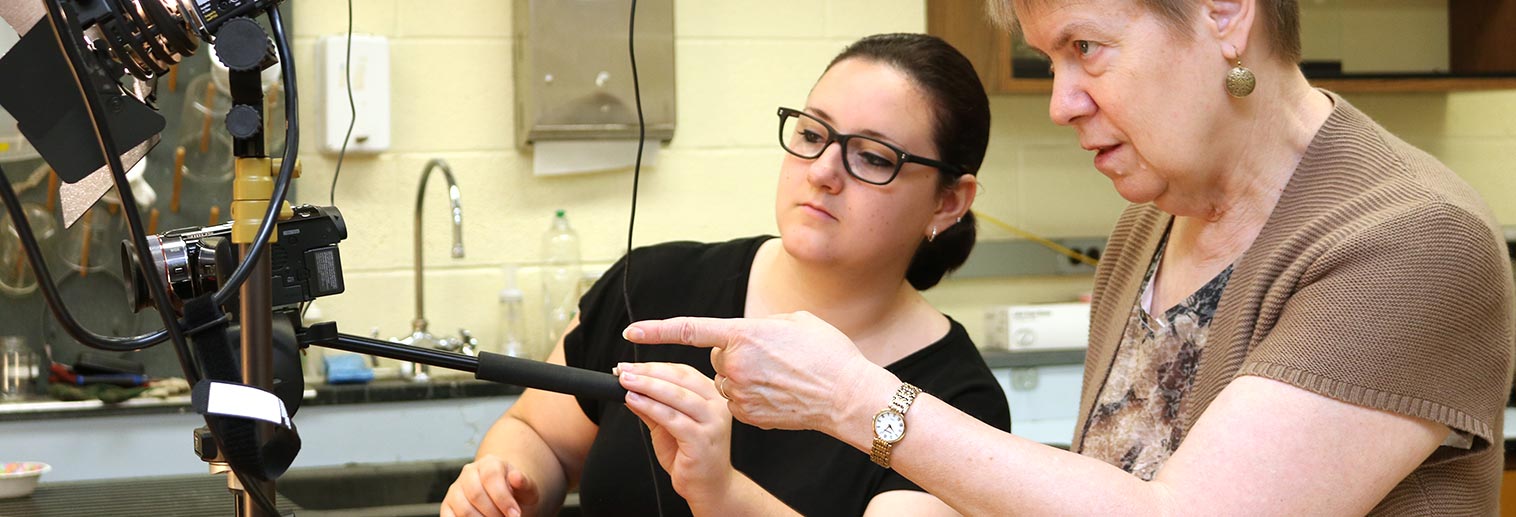Michelle Pomposello '18
"How Do Sand Boas Capture Prey They Cannot See"
Major/Minor: Biology
Hometown: Lehighton
Project Advisor(s): Dr. Irish
Briefly describe your project.
We observed the burrowing of sand boas in a naturalistic setting beneath a substrate. Once the snake was burrowed we presented prey into the environment. We then observed and analyzed the method of prey strike. From this stemmed a side experiment where we tested to see if the sand boa’s burrowing pattern would be affected by the presence of prey scent.
Based on preliminary data collected by Dr. Irish and her past students, we were able to collaborate and pose a few specific questions about the method of Sand Boa prey capture from beneath a substrate.
How did your faculty advisor guide you through your research?
Dr. Irish is one of my favorite people. She is so kind, caring, and incredibly intelligent. I was so lucky to have the privilege to work with her and learn from her technique and experiences. She guided me in ways that allowed me to think about questions related to my project. Through her help and guidance, I learned how I wanted to set up my experiment in ways that I would not have thought of on my own.
What has been your biggest obstacle so far?
Our biggest obstacle so far has been trying to imitate a natural setting within a laboratory as well as eliminating unnecessary factors/independent variables that are not part of what we are researching.
What has been your biggest takeaway from this experience?
My biggest take away is that research is a marathon and not a sprint! There is a lot of behind the scenes work that goes into preparing an experiment or project and then carrying it out that many people do not realize at first. Also, when doing research, anything can happen! A person in this field of work needs to be adaptable and okay with the fact that things will not always go according to plan.
What was the result of your project?
We have collected a lot of data and have many statistical figures corresponding to videos and in-person observations from the experiment. Overall we found that, in contrast to our original hypothesis, the sand boas did not completely submerge themselves beneath the substrate but sat with their heads partially exposed. Attack on prey was made based on touch.
Will you expand on your research after this summer is over? If so, where would you like to see it go?
I will not be continuing my research on this specific subject, but I hope that other students with an interest in my study will pick up where I left off!
In your own words, how do you feel about being awarded this opportunity?
I am so honored and privileged to have had the opportunity to participate in SOAR! I learned so much about real life research that I would never have gained in a different setting. The faculty and students were wonderful and it was honestly a very rewarding and fascinating summer! Students should take advantage of Moravian University’s SOAR program because it will give them the hands-on skills and knowledge needed in the real world when obtaining a career.

